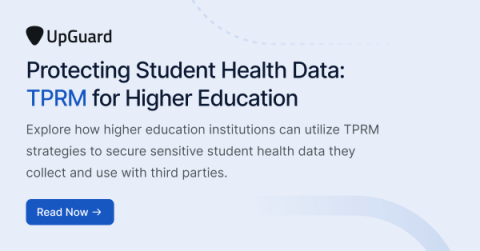Protecting Student Health Data: TPRM for Higher Education
Higher education institutions are a growing target for cybercriminals due to the high volume of sensitive information and data they collect and use. From enrollment to matriculation, colleges and universities utilize student data for everything from financial aid packages to determining eligibility for coursework. According to a report by Check Point Research, the education sector (specifically higher education) has experienced significantly more cyber attacks than any other industry in recent years.











